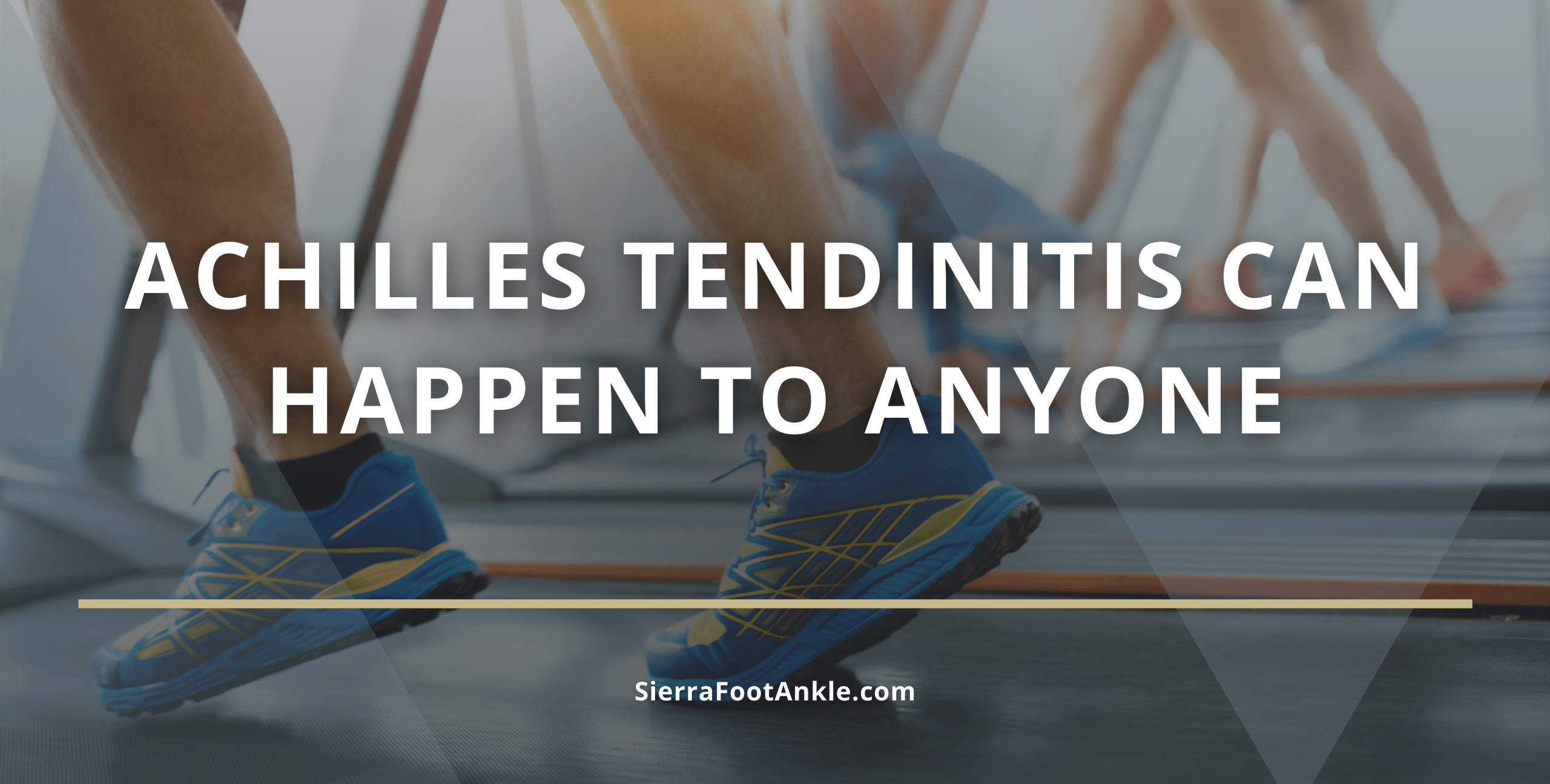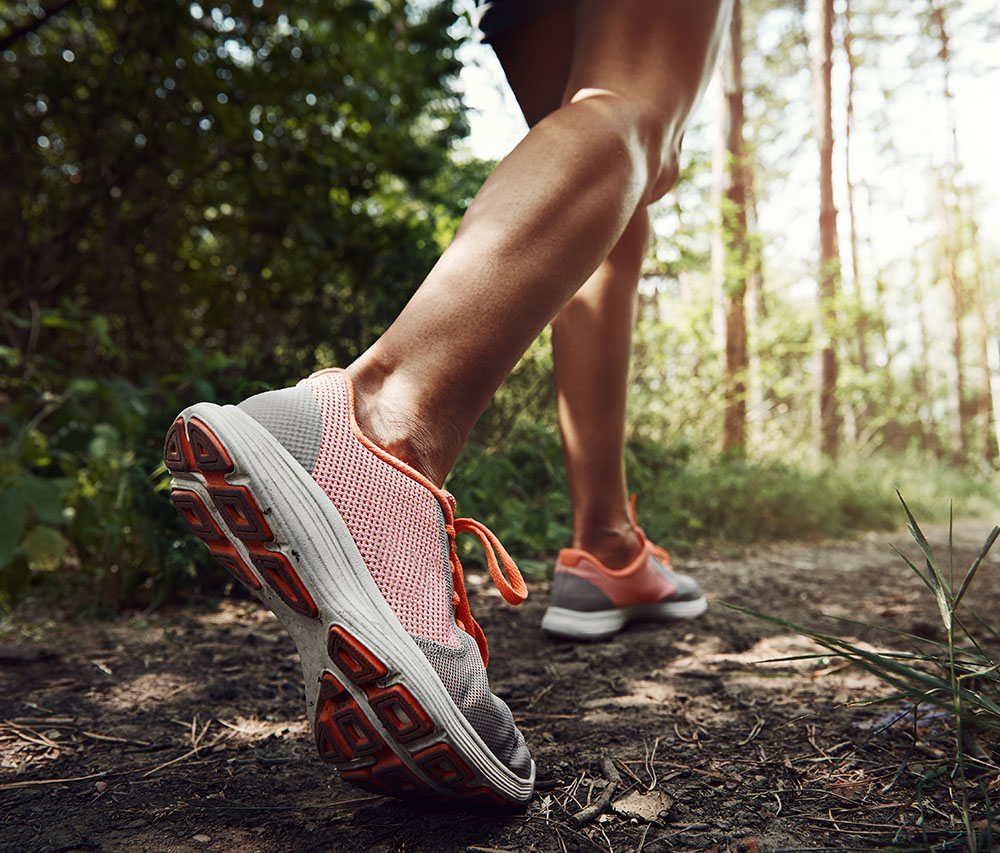Achilles Tendinitis
Not unlike its namesake Greek hero, your Achilles tendons are strong—in fact, the strongest, thickest, and toughest of the roughly 4,000 tendons in the human body. Even so, they are far from invincible. With repetitive strain and overuse, the tendon fibers can stretch, swell, or even degenerate, leading to chronic stiffness and pain.
What are the Symptoms of Achilles Tendinitis?
Achilles tendinitis symptoms tend to get progressively worse over time without treatment. You may first notice a dull ache that appears just above the back of the heel after periods of activity, but in time the pain will increase, and the amount of activity required to trigger it will shrink.
Other symptoms may include:
More intense pain, especially the day following exercise
Stiffness, particularly in the morning
Tenderness or warmth in the back of the leg
Thickness or swelling in the tendon
What Causes Achilles Tendinitis?
Achilles tendinitis is an overuse injury. You won’t get it from a single traumatic moment (although the tendon can rupture that way), but instead from lots of small impacts over time. Often it happens when you try to push yourself to do too much, too soon, especially if you haven’t been very active in the past or are switching to a new sport or training regimen.
Biomechanics also play a critical role in many cases. Our feet weren’t originally designed to handle all the hard, flat surfaces of the modern world, so without proper support or cushioning the tendon can wear down faster.
Achilles tendinitis tends to be most common among those in their late 30s through early 60s. Tendons weaken and lose flexibility with age, so they become more susceptible to injury with time.
What Causes Achilles Tendinitis?
Achilles tendinitis is an overuse injury. You won’t get it from a single traumatic moment (although the tendon can rupture that way), but instead from lots of small impacts over time. Often it happens when you try to push yourself to do too much, too soon, especially if haven’t been very active in the past or are switching to a new sports or training regimen.
Biomechanics also play a critical role in many cases. Our feet weren’t originally designed to handle all the hard, flat surfaces of the modern world, so without proper support or cushioning the tendon can wear down faster.
Achilles tendinitis tends to be most common among those in their late 30s through early 60s. Tendons weaken and lose flexibility with age, so they become more susceptible to injury with time.

How We Treat Achilles Tendinitis
There are multiple treatment options and strategies to defeat Achilles tendinitis. Dr. Victoria Melhuish will provide a complete examination, perform any necessary tests or imaging scans, and then provide a recommended treatment plan that takes your injury, goals, health, and desired lifestyle into account.
The good news is that surgery is very rarely necessary. Even in extreme cases where symptoms are severe or stubborn, and more traditional remedies prove to be ineffective, our office is equipped with many advanced, evidence-based treatment options that can provide relief. These include:
- MLS laser therapy. This exceptional treatment option uses a therapeutic laser system to reduce pain and inflammation while also energizing your body’s natural tissue regeneration. This helps your body heal itself faster, or even “restart” a healing process that has stalled out and become chronically inflamed.
- AmnioFix injections. Unlike cortisone injections (which can actually damage tendons if overused), AmnioFix injections not only help reduce pain, but also help heal injuries. The injection is made from biomolecular tissue packed with growth factors and nutrients your body needs to conduct repairs. It is often combined with laser therapy to get the greatest possible results.
- Go 4-D custom orthotics. This technology represents a huge leap forward from the kinds of custom orthotics most podiatrists are still using. The process has been revolutionized, with digital foot scanning, pressure sensing, algorithmic design and 3D-printing combining to create the most comfortable, effective, and technologically advanced orthotics yet.
Not all cases of Achilles tendinitis will require an advanced approach, however. Many mild-to-moderate cases respond well to simple, time-honored home care techniques, including:
Resting for a few days. Avoid running, impact sports, or other vigorous activities for a brief period to allow your swollen tendon to repair itself.
Icing, over-the-counter painkillers, or cortisone shots can be used in moderation to fight a tough flare up of pain or swelling.
Stretch and exercise your feet and calves. This keeps them strong, flexible, and limber, which relieves existing pain and makes the tendon more resistant to subsequent stresses.
Try to cross-train with a mix of different activities to avoid overloading with activities that strain the Achilles. Walking, swimming, weightlifting, or riding a bicycle are good alternatives.
If pain is severe, temporary immobilization using a walking boot may be recommended to keep the foot and ankle in place during the healing process.
Make sure you have good shoes for your activities.
Ease into new activities and workouts, and increase your intensity levels gradually over a period of several weeks rather than all at once.
A weakened, painful tendon not only gets in the way of happy, active living but also leaves you more vulnerable to a more serious tendon rupture, which may require surgery for effective treatment. That’s why, if resting for a few days isn’t enough to relieve your symptoms, you should make an appointment with Sierra Foot & Ankle for a personalized treatment plan. Our office is conveniently located in Carson City, NV. Drop us a line using our online contact form, or give us a call at (775) 783-8037.
Get In Touch
Address
2350 South Carson St
Suite 3
Carson City, NV 89701
Contact
Call: (775) 783-8037
Fax: (775) 782-3787
OPT-IN To Text:
By texting our office at
(775) 783-8037 from your mobile phone, you are consenting to receive SMS text messages from our staff. Reply STOP to unsubscribe.
*Read our Privacy Policy & Terms and Conditions.
Social




© Sierra Foot & Ankle. All Rights Reserved. Privacy Policy.
Web Design by CP Solutions. Marketed by VMD Services.


